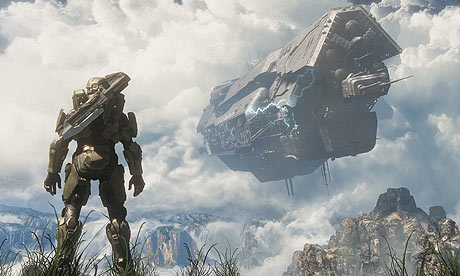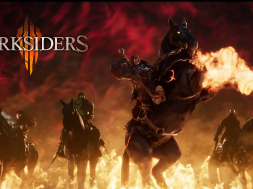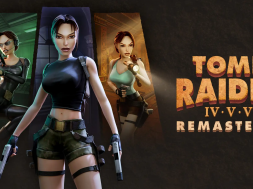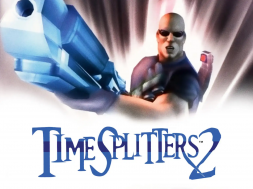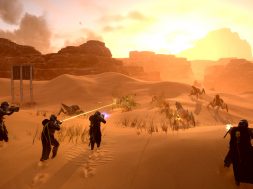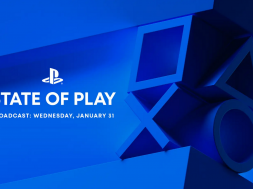

Title: Halo 4.
Release Date: November 6th.
Developer: 343 Industries.
Publisher: Microsoft Studios.
It’s always been the game referred to as the Xbox’s “killer app”. The shooter that so many others have taken points from, to the point where many of its innovations are now commonplace in the FPS market. One of the best-looking, best-sounding, and most-played series of all time, with an expanded universe of comics, books, and animations that makes it arguably one of the greatest sci-fi epics of the modern era.
I speak, of course, of Halo.
Bungie Studios’ flagship series (comprised of the Halo trilogy [as well as Anniversary, the remake of Combat Evolved], side-games ODST and Reach, and the Ensemble Studios-developed RTS Halo Wars) has been a dominating player in the genre of first-person shooters ever since its first game in 2001. Something of a rarity, an FPS series with a serious story element to it, the Halo trilogy showed us a truly devastating interstellar war through the eyes of John-117, the Master Chief, a super-soldier who served as humanity’s brightest hope against their enemy, the alien alliance known as the Covenant. Along the way, we also discovered the Forerunners, a mysterious race of precursors with technology beyond imagining, and a mysterious connection to humanity. Part of this technology is what gave the series its moniker, the Halo rings, massive superweapons designed to eradicate all life in the galaxy.

However, all stories come to an end, and on the run-up to the release of Halo 3 in 2007, this was focused on. The game’s tagline was “Finish the fight”, and all indications were that this was it. The Master Chief’s story was coming to a close. And indeed it did, getting an excellent ending at the climax of Halo 3 (with, of course, a slight hint that more could come, Bungie likely implying that the Chief would have further adventures).
But then, following the release of Halo: Reach, Bungie announced that they would no longer be working on their series. Shortly afterwards, Microsoft’s internal studio founded for the purpose of making new Halo games, 343 Industries, announced that they were working on Halo 4, the first part of an all-new trilogy.
Now, I have to admit, when I first heard this news, I wasn’t too pleased about it. To announce a new trilogy so quickly seemed like a blatant cash-in, and handing it over to a new studio was, of course, a risky move, especially considering the level of care and consideration that Bungie had given to the series, as well as their interaction with the player community. 343 Industries were unproven at the time, and a lot of Bungie’s die-hard fans were displeased with the decision. To be honest, I wasn’t even sure whether I was going to pick it up at first, having only decided that I may as well give it the benefit of the doubt after some thought.
Having now finished the campaign of Halo 4 and played the multi-player for two days straight and counting, I can safely say that my fears were for nothing. Halo 4 is almost certainly the best one yet. Is it different? Very. Are those differences for the better? Yes.
The story picks up four years after the ending of Halo 3, with the presumed-dead Master Chief being awoken from cryostasis to find that the ship he’s been aboard since the aforementioned ending, the Forward Unto Dawn, is under attack from something unknown. This turns out to be Covenant soldiers (more on that later), although both their presence and an unidentified scan on the ship imply that there is more to this situation than meets the eye. It is eventually discovered that the ship is drifting towards a massive, practically-mechanical planet (eventually called Requiem), which pulls both the Forward Unto Dawn and the Covenant ships into itself with some sort of gravity well. From that point on, it’s time for the Chief, accompanied by his usual companion, the artificial intelligence Cortana, to journey through this mysterious planet and figure out its mysteries.

Honestly, to say any more about the plot would be spoilers, and I’m going to stay away from those. I don’t feel comfortable spoiling it because the plot of Halo 4 is utterly fantastic. 343 have crafted a plot that, I will admit, may not make as much sense to those who haven’t been following the Halo expanded universe, and they might not get as much out of it. Those fans who have been following the full Halo story, however, will find that the story has a huge amount of reward for them, with several dozen moments or so that literally made my jaw drop. It’s a story that adds a great amount to the overall saga of the Haloverse, with a great deal to be taken from the books, such as Greg Bear’s current Forerunner trilogy and Karen Traviss’ Glasslands in particular.
The story, however, is only the tip of the iceberg. Looking at the campaign of Halo 4, practically everything about it has been significantly improved since its predecessors. For the enemy side, the Covenant play almost identically to the way they have in the past, although it seems that the difficulty has been upped slightly, their weapons doing more damage than their past incarnations. Meanwhile, the new enemies, the Prometheans, are an exercise in tactics, being surprisingly difficult to tackle, bordering on frustration at some points (their numbers seem inexhaustible). The Promethean Knights, in particular, the toughest of the enemies, are each a challenge in their own right, equipped with the most powerful weapons and a great deal of defence, able to teleport at will, and even able to spawn their own turrets and shields. Suffice it to say, fighting more than one of them at once can be challenging.

Aesthetically-speaking, Halo 4 is honestly one of the best-looking shooters and indeed games I’ve ever seen. The Halo series has always been one of gaming’s more colourful shooters, but this one takes the cake. It’s extremely vibrant, with lush environments and great character designs, both for protagonists and the villains. The scenery of Requiem is gorgeous, with towering spires and giant forests, as fantastical as one would expect a machine planet to be.

Some of the set-pieces, in particular, are utterly stunning, easily matching up with the best of the series. Meanwhile, the soundtrack, something I was quite worried about due to the lack of long-time series composer Marty O’Donnell, is as epic as ever. Halo having always had an extremely strong soundtrack, Halo 4 had quite a lot to live up to. It’s very different, but I suppose that’s a good thing, as that is much of the point of this entry in the series, and it manages to be a great soundtrack in its own right (the piece “117” in particular, being probably my favourite).
The missions of the campaign have a lot to them, being lengthy, and each bringing their own challenge. I have to say, I was extremely impressed with the variety of the campaign. Every mission brings something new to the table, whether it be new weapons, abilities, or vehicles to play with, new enemies, new environments, open levels with a variety of ways to approach everything, or close-quarter fighting in more cramped, intense spaces. The campaign manages to never feel even slightly stale, practically bombarding the player with fun new toys and cool stuff. It’s as if 343 Industries are basically giving players everything they could want (for any fans of the series, all I need to say is: flyable Pelican).

As for those new toys, how do they fit into everything? The answer, at this point, shouldn’t surprise you. The new range of equipment and vehicles in Halo 4 is extremely well-balanced, and improved significantly over its predecessors. On the weapons side of things, we have several old favourites returning, but retooled. The good old Assault Rifle has a harder kick to it than prior, so does the classic Magnum, both the Battle Rifle from the main series and its Halo: Reach replacement the DMR are in, the Covenant Plasma Pistol is back and better, same with the Needler, and so on. Each faction has new weapons introduced, whether it be the UNSC’s quite awesome new machine gun, the SAW, or the Covenant’s new assault rifle, the Storm Rifle. Meanwhile, the Prometheans have an entire category to themselves, with an all-new third range of weapons introduced, mostly still fitting into the same basic categories as have already existed, but with added versatility (e.g. the Promethean Boltshot, a pistol which can be charged up to fire shotgun-like blasts). The balance between all these weapons is maintained excellently, and there truly is a place for everything.
Now, that said, I don’t want to say much more about the campaign here, so let’s get away from it for a bit and jump over to the multi-player, presumably the part that a lot of people are buying it for. This time, the multi-player is actually woven into the story, something I thought was a nice touch. The multi-player takes place aboard the UNSC Infinity, a new hyper-advanced ship designed for training the new SPARTAN-IV candidates. Therefore, every multi-player battle is actually a training battle between two SPARTAN groups. There are two main elements to this; the standard multi-player matchmaking and the newly-introduced Spartan Ops.
![]()
Matchmaking, now known as War Games, is similar to its past incarnations. All of the classic gametypes, such as Slayer or Capture the Flag, are there, along with a few fan-favourites like Grifball and some new additions, like Dominion, a base-capturing game, and Flood, a gametype that actually allows players to play as the Flood themselves, their only appearance in Halo 4. It’s as quick and fun a process to get into a game and play as ever, and gameplay is a lot faster-paced, more visceral.
That said, there are several tweaks. A main one is the introduction of the Ordnance Drop system. Weapon pickups during games are now a thing of the past. Instead, there are a small selection of more specialist weapons than the generalised starting ones placed at the beginning of a map, and that’s all for the game. Replacing them is a system where during a match, a player can occasionally call down a drop, consisting of either a new weapon or a powerup. It adds quite a bit of variety to the way a match plays, as it puts players on more of a general even footing. No longer can players rush the powerful weapons and grab them all early, something that was a definite problem in earlier games. Another significant change is that of the Loadout system. With this, players can, to a reasonably limited extent, customise the equipment they go into battles with, purchasing new items with credits gained from ranking up in the game. This allows players to pick a primary weapon (from the basic assault rifle or marksman rifle equivalent for each of the three factions), a pistol (again, any one of the three pistols), an Armour Ability (a minor extra ability, such as a jetpack or cloaking), and two extra packages that essentially work as perks, such as giving the user faster shield recharge or increased reload speed. The system is very balanced, in that it only gives the user basic weapons to choose from, and the minor bonuses granted by the packages and Armour Abilities make every player their own very slightly different challenge, excellent for variety.
Meanwhile, Spartan Ops is a whole new game mode in itself. Released as free weekly campaigns of five missions each, each Spartan Ops campaign is a mini-story in itself, where the player is one of the SPARTAN-IVs in training. I think these are a great idea. It ensures that players will constantly have more content to work on, complete with its own narrative. Making it weekly was a fantastic idea, too.
Aside from everything I’ve said, there are other elements in play. The Forge level editor is back and more powerful than ever, doubtlessly able to accomplish incredible things in the hands of a player more talented than I. Theater mode returns, for players to record and watch the most hilarious moments of their matches again and again.
…So yeah. If you’ve read this far, you already know that I’m going to tell you to go and buy Halo 4 if you haven’t done it already. 343 Industries have genuinely made one of the most complete, full-to-bursting, well-crafted games I have ever played. I can’t immediately recall having been so immersed in a campaign since…well, since Halo: Reach, actually. But more so. Any complaints I do have about it are minor enough that they really don’t affect the game at all, and to be honest, I can’t even immediately dredge up a list of them. To be honest, it’s a wonder I got this review done at all, because I kept getting distracted by playing it. Utterly brilliant. Halo remains in its lofty perch as always.
…Now off I go to play more.
Good Points:
- Expansive and varied campaign, tremendous fun.
- Beautiful graphics and sound.
- Fantastic story.
- Huge variety of equipment and vehicles.
- Balanced and competitive multiplayer with a large amount of game types.
- Spartan Ops, constant new content.
- Some enemy tactics can be a bit cheap e.g. the Promethean Knight spawning more enemies.
- Control scheme is a bit weird at first, will take some getting used to for series fans.
- Spartan Ops missions can be a little repetitive.
- As close to 10/10 as a game that isn’t totally perfect can be. Let’s say 9.5/10.
